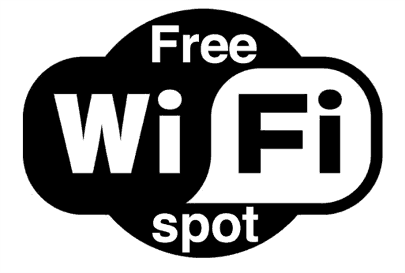![]() All too often customers who sign up for “price lock” agreements or 12-24 month service contracts find themselves trapped when a provider finds a clever way to increase rates or introduce usage caps and still subject customers to a steep early termination fee if they want out of the deal.
All too often customers who sign up for “price lock” agreements or 12-24 month service contracts find themselves trapped when a provider finds a clever way to increase rates or introduce usage caps and still subject customers to a steep early termination fee if they want out of the deal.
In the United Kingdom, the Office of Communications (Ofcom) wants providers to tell customers at least 30 days before any price or service changes and show customers how to cancel the contract and leave without a termination fee.

Ofcom says its new rules on ISPs, landline and mobile operators are designed to stop mid-contract price hikes or service reductions.
The regulator is responding to multiple consumer complaints where providers have used “wiggle room” in contract language designed to let customers off the hook if a provider attempts a “materially adverse” change mid-contract that a customer does not accept. This language is common in both the United Kingdom and North America.
Several years ago, providers on both sides of the Atlantic began adding non-regulatory fees to customer bills to hide rate increases. The charges often sound “official,” but are in fact not. When customers demanded to cancel over charges like “regulatory recovery fees,” “rights of way fees,” or other costs of doing business now broken out on their bills, many successfully invoked the “materially adverse” clause of their contract to escape termination fees.
These days wireless carriers have gotten wise to that. When a customer now calls to demand out of their contract, companies refuse, claiming the small dollar amounts involved are not “material” changes. They often reinforce this by offering to credit a persistent customer’s account for the amounts involved.
Ofcom considers this practice an end run around the contract, and wants it stopped. The regulator is notifying providers it is now likely to regard any and all price increases of any kind to be “materially adverse/detrimental.” The regulator warns it will also treat reductions in voice minutes, texting, and data usage allowances the same as a price hike.
“Ofcom is today making clear that consumers entering into fixed-term telecoms contracts must get a fairer deal,” said Claudio Pollack, director of Ofcom’s Consumer Group. “We think the sector rules were operating unfairly in the provider’s favor, with consumers having little choice but to accept price increases or pay to exit their contract. We’re making it clear that any increase to the monthly subscription price should trigger a consumer’s right to leave their contract – without penalty.”
Ofcom has also found that some consumers were caught unawares by mid-contract price rises and were not sufficiently warned this could happen when they signed up. In some circumstances, consumers may also have not been made adequately aware of their right to exit their contract, or of the amount of time they had to exercise this right.
To address this problem, the new rules explain how providers should communicate any contract changes, pricing or otherwise, to consumers.
These measures include ensuring that letters or e-mails about contract changes should be clearly marked as such, either on the front of the envelope or in the subject header. Notifications of price increases must also be clear and easy to understand and make customers aware of the nature and likely impact of the contract change.
Where relevant, information about the customer’s right to exit the contract should be made clear upfront – for example, on the front page of a letter or in the main e-mail message, rather than via a link. The period within which consumers can cancel their contract (Ofcom’s guidance sets out that providers should allow consumers 30 days) should also be made clear.
The new rules take effect in 90 days.


 Subscribe
Subscribe AT&T has expanded its TV Everywhere service to cover more devices and networks, adding more than 20 channels available for streaming outside of the home.
AT&T has expanded its TV Everywhere service to cover more devices and networks, adding more than 20 channels available for streaming outside of the home. A new research report issued by Time Warner Cable concludes cell phone companies like AT&T and Verizon Wireless cannot meet the future data demands of customers over their 4G LTE wireless networks without punitive usage caps and high fees to deter usage, even with new spectrum becoming available for the wireless industry’s use.
A new research report issued by Time Warner Cable concludes cell phone companies like AT&T and Verizon Wireless cannot meet the future data demands of customers over their 4G LTE wireless networks without punitive usage caps and high fees to deter usage, even with new spectrum becoming available for the wireless industry’s use. “Given a choice, more than 80 percent of tablet, laptop, and eReader owners would either prefer Wi-Fi to mobile access, or have no preference,” Cisco concluded. “And, just over half of smartphone owners would prefer to use Wi-Fi, or are ambivalent about the two access networks.”
“Given a choice, more than 80 percent of tablet, laptop, and eReader owners would either prefer Wi-Fi to mobile access, or have no preference,” Cisco concluded. “And, just over half of smartphone owners would prefer to use Wi-Fi, or are ambivalent about the two access networks.”
 Frontier Communications is interested in buying landlines bigger phone companies like AT&T and Verizon might want to sell.
Frontier Communications is interested in buying landlines bigger phone companies like AT&T and Verizon might want to sell.

 Comcast
Comcast 
